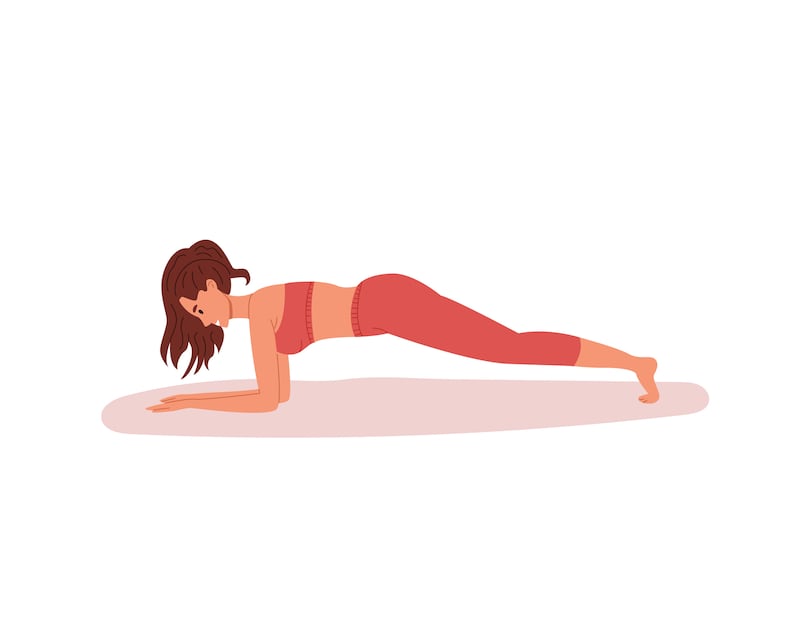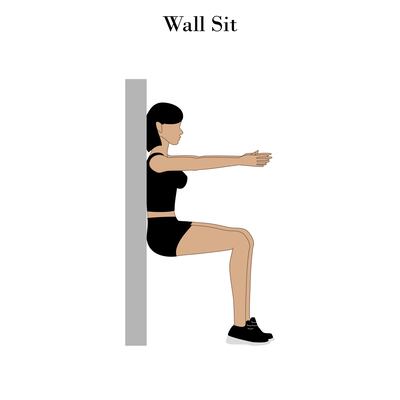A recent study involving more than 15,000 participants in 270 clinical trials has shown that isometric exercises can significantly lower resting blood pressure.
Isometric exercises involve holding static positions for long periods of time. The exercises – such as plank or wall sit – involve engaging and tensing muscles without lengthening them.

There are two types of muscle contraction. Isotonic contractions occur when muscles become shorter or longer against resistance, and tension remains the same. Isometric contractions occur when tension increases, but the muscle remains at a constant length.
[ Planks and wall sits best for lowering blood pressure, study findsOpens in new window ]
This new study is “an excellent piece of research that has real world implications for the health of our population”, says Prof Cathal Moran, consultant orthopaedic surgeon at UPMC Sports Surgery Clinic.
‘I’m gay and I started a relationship with a very closeted man last year. He’s a nice guy but he’s doing my head in’
Irish couple’s End Sepsis scheme marks first White House event dedicated to informing US public on disease
Bill Tormey profile: Former Fine Gael politician a vocal commentator on health service for decades
FoodMarble targets new growth as it plans US expansion
The findings can be used as a guide to develop anti-hypertensive exercise routines, which in turn benefit both systolic and diastolic blood pressure.
Following shoulder surgery, isometric exercises can stimulate muscle activity and help with pain modulation as the shoulder is often immobilised in a sling
— Dr Therese Leahy, clinical specialist physiotherapist
Prof Moran, who is chair of orthopaedics and sports medicine at Trinity College Dublin, said “it is fantastic to see that a simple intervention such as isometric exercise which can be safely and easily performed by all ages has the potential to improve resting blood pressure”.

Isometric exercises following surgery can provide several benefits for recovery, says Prof Moran. “Firstly, they promote circulation and help reduce the risk of clots. Secondly, they facilitate maintenance of muscle strength and reduce muscle atrophy in the early phase of recovery, where traditional strength exercises are often not feasible due to restrictions in range of movement.” He said isometric exercises have also been shown to help with pain modulation following surgery, and they are generally safe for all patients to perform without causing risk to the healing process.
Clinical specialist physiotherapist, Dr Therese Leahy, works as a director in Moran’s clinic and recommends isometric exercises for the affected and surrounding joints/tissues which have undergone surgery. “In our knee and shoulder orthopaedic practice, we prescribe isometric exercises of the quadriceps following ACL reconstruction. This is to stimulate muscle activity in the quadriceps muscle, as it often becomes atrophied and weak following ACL surgery.”
When traditional exercises are not feasible, Dr Leahy recommends isometric exercises for the rotator cuff. “Following shoulder surgery, isometric exercises can stimulate muscle activity and help with pain modulation as the shoulder is often immobilised in a sling.”
Isometric exercises are an important aspect of rehabilitation, strength and conditioning, says Prof Moran, as they help to develop static strength and stability. “They often form the foundation of exercise and strength and conditioning programmes, providing a baseline of strength and stability before progressing to isotonic and traditional-based strength exercises.”
Isometric exercises are beneficial for all age groups, but at Prof Moran’s clinic the team recommends them for those with limited joint mobility. “In the case of osteoarthritis, they can help maintain muscle strength and reduce pain and can be performed without any specialised equipment.”

Dr Domenico Crognale is a sport and exercise scientist managing the human performance laboratory at the Institute for Sport and Health at UCD. In terms of sport and the research literature, the message is clear, he says. “You can see an improvement with strength in isometric training. You will have an increment on the specific position and angle of the joint that you have been using during your isometric training.”
[ Q&A: I keep getting injured while running. What am I doing wrong?Opens in new window ]
Dr Crognale gives the example of holding a squat. “If you are holding a squat position approximately 100 degrees between the thigh and the shin, that’s the specific position at which you will observe the maximal improvement.” Holding a position can help beginners to familiarise themselves with the exercise.
Although the evidence is clear, Dr Crognale says isometric exercises need to be used with care on the older generation. “When you’re maintaining a pose, the pressure within the thorax increases.”
You can adjust the exercise for the person, however. “You can keep the leg extended while sitting on a chair. That’s less weight-bearing than holding a squat at the very bottom position.
Holding a static position for a short duration is good for people who have busy schedules, and they just need to get something done really
— Rob Lipsett, personal trainer and author
“It’s an important component to build and improve technique, for holding a rifle from clay pigeon shooting, for example.”
Rob Lipsett is a personal trainer, author and fitness entrepreneur. The isometric hold is a particularly powerful tool in bodybuilding, he says. “Let’s say you’re doing a curl; you’ll hold it halfway in a really difficult position, that would be called like an isometric hold on your bicep.”
Isometric exercises are joint-friendly and easily accessible, says Lipsett. “They don’t involve repetitive motions or heavy weights that can sometimes strain or injure your joints. They’re also convenient and they can be performed virtually anywhere without the need for specialised equipment. You use your own body weight like in the plank, or just simple props like sitting against the wall.”
Isometric exercises are also time-efficient, says Lipsett. “They can save time while still delivering muscle and endurance benefits. Holding a static position for a short duration is good for people who have busy schedules, and they just need to get something done really.”
So, what’s the correct way to do an isometric exercise? According to Lipsett, technique is key. “Brace your core and hold your breath. In a squat, you hold your breath on the bottom of the movement, but then you should breathe out at the top of the movement.”
Even though the exercises are static, Lipsett recommends modifying them as you progress. It’s harder to measure that progress compared with traditional weight training. “You can start off with a bodyweight plank, and then you can add like a weight on to your back to add more resistance. If you’re doing a wall sit, some people hold plates to make it more difficult.”
The most effective isometric exercise for lowering blood pressure is wall sit, according to this study’s co-author and clinical scientist in cardiology, Dr Jamie O’Driscoll.

Five types of isometric exercise
- Wall sit
- Plank and side planks (for obliques)
- Glute bridge
- Overhead holds
- Low squat holds
- V-sits




